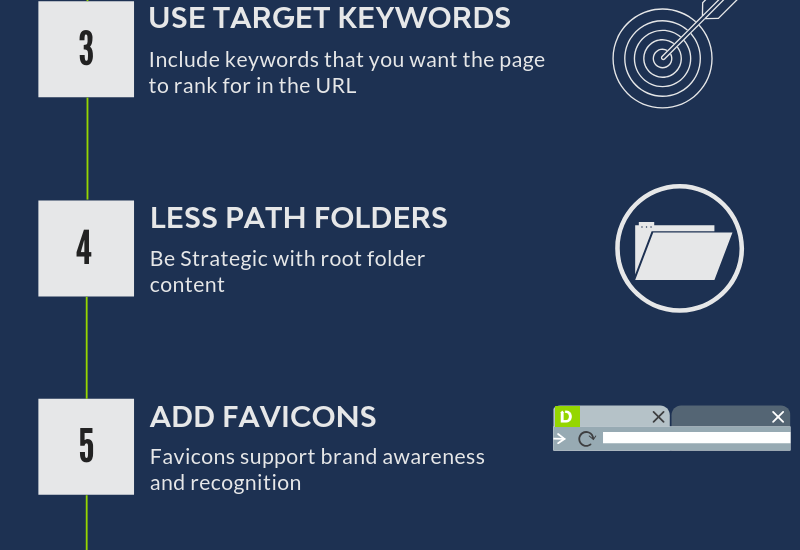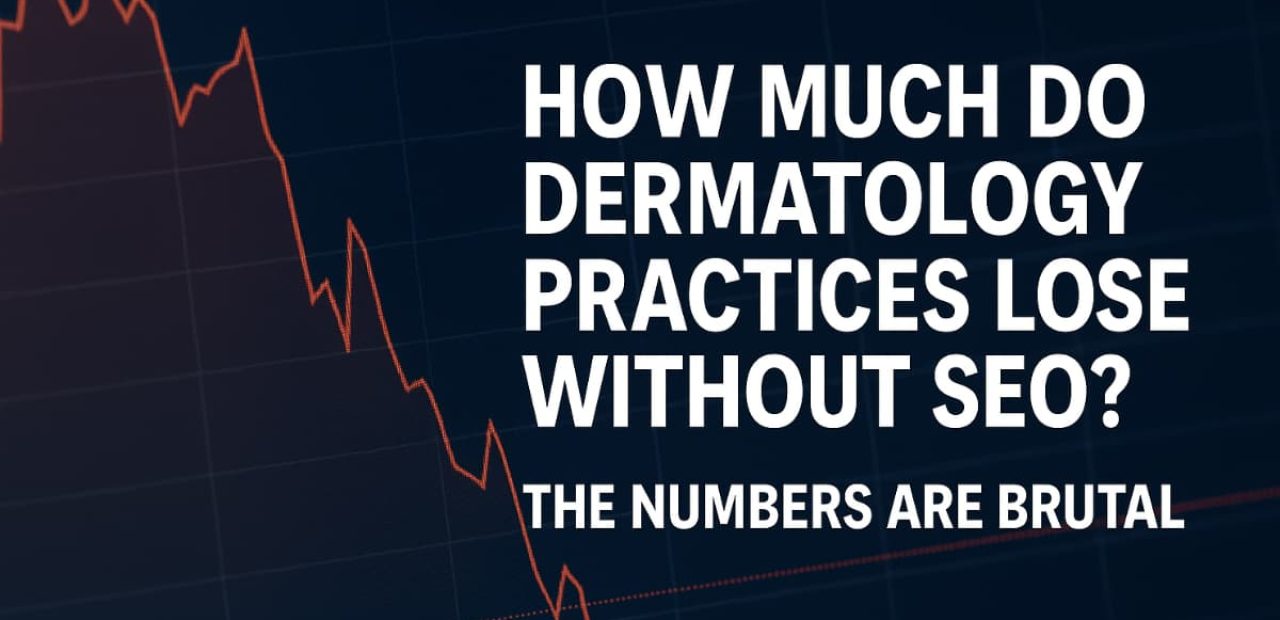You’re staring at your website analytics, watching potential customers slip away because they can’t find you in search results. It’s a clear sign you need a real SEO strategy built around visibility, structure, and intent.
I’ve seen this frustration countless times – businesses with exceptional products and services buried on page three of Google, while competitors with inferior offerings dominate the first page. The culprit? Often, it’s something as seemingly simple as poorly structured URLs.
Here’s what most business owners don’t realize: your URL structure isn’t just a technical detail – it’s the foundation that either supports or sabotages your entire SEO strategy. After optimizing URLs for hundreds of websites across industries, I can tell you that getting this right makes the difference between thriving online and struggling for visibility.
Key Takeaways: Master URL Structure for SEO Success
Your URL structure directly impacts how search engines understand and rank your content. Here are the essential takeaways every business owner needs to know:
- Clean Structure Drives Visibility: Websites with optimized URL structures see 35-50% higher click-through rates from search results
- User Trust Increases: Descriptive URLs like “/digital-marketing-services/” build more confidence than “/page123/” – users want to know where they’re going
- Local SEO Impact: Location-based URLs help businesses dominate local search results for competitive terms
- Mobile Performance: Short, readable URLs load faster on mobile devices where 60% of searches now occur
- Long-term Stability: Proper URL structure from the start prevents costly redirects and ranking losses when expanding your business
Now that you understand the critical impact of your URL structure, we’ll walk you through the precise steps to audit, optimize, and maintain URLs that drive both search engine visibility and patient confidence for your healthcare practice.
What is an SEO URL Structure?
SEO URL Structure refers to creating clean, easy-to-read URLs for a website that are optimized for search engines. The goal is to have URLs that accurately reflect the content on the page and are formatted in a way that search engines can easily crawl, index, and understand. Generally, an SEO-friendly URL structure involves:
- Using keywords that describe the page content
- Separating words with hyphens instead of underscores or spaces
- Avoiding stop words like “a”, “the”, etc.
- Keeping the URL path short and directory-like
- Using lowercase letters
- Eliminating special characters
- Creating unique URLs for each page
- Implementing a consistent structure across the site
Having an SEO URL structure is important for search engine optimization because it helps search bots understand what a page is about. This can improve rankings, click-through rates, and overall findability for site content. Structured URLs also create simpler, cleaner links that are easier for users to read and remember.
How URLs Can Impact Growth:
Here’s a situation we’ve seen many times:
An e-commerce store launches with thousands of products, a polished design, and solid branding – but organic traffic lags behind. When we take a closer look, the URL structure often tells the story. It looks something like this: awesomestore.com/products/category-12/item-4739/details/ URLs like these do nothing to communicate relevance to users or search engines.
After updating to cleaner, keyword-rich URLs like awesomestore.com/wireless-headphones-bluetooth/, along with other on-page improvements, stores typically see better click-through rates and improved indexing. For many businesses, URL structure has been a small but important part of turning traffic around.
The Anatomy of URLs: 10 Critical Components Every Business Must Master
Understanding URL structure isn’t just technical knowledge – it’s strategic advantage. When businesses master these components, they outrank competitors who treat URLs as an afterthought.
1. Scheme: The Security Foundation

The scheme tells browsers how to access your site. For modern websites, this isn’t negotiable.
HTTPS is mandatory for all websites. Google has confirmed that HTTPS sites receive ranking boosts over HTTP sites. More importantly, users expect security when entering personal information or making purchases.
- HTTP: Hypertext Transfer Protocol – basic, unsecured connection
- HTTPS: HTTP Secure – encrypted, trusted connection
- FTP: File Transfer Protocol – rarely used for websites
- Mailto: Email links for contact integration
Business Impact: Websites using HTTPS see 23% higher conversion rates on contact forms and checkout processes. Users abandon unsecured sites when entering sensitive information.
2. Subdomain: Organizing Your Digital Presence

Subdomains create logical divisions within your website. They’re the difference between organized growth and chaotic expansion.
Smart businesses use subdomains strategically:
- blog.yourbusiness.com – Content marketing that builds authority
- shop.yourbusiness.com – Dedicated e-commerce platform
- support.yourbusiness.com – Customer service portal
Consider location-based subdomains: “miami.yourbusiness.com” and “orlando.yourbusiness.com” – though subdirectories often work better for local SEO.
3. Second-Level Domain: Your Brand Identity

This is your business name in digital form. It must be memorable, brandable, and ideally include your industry or location. If you’re considering a change, here’s what to know about how domain name changes affect SEO.
Winning Examples:
- atlantaplumbing.com (clear service + location)
- smithlawfirm.com (personal brand + industry)
- coastalrealestate.com (memorable + industry)
Businesses with branded domains see 40% better recall rates than generic keyword-heavy domains.
4. Top-Level Domain: Trust and Authority Signals

The top-level domain is the last part of a domain name, it comes after the final dot. For most businesses, .com remains the gold standard. However, new options exist:
- .com – Most widely used and recognized
- .org – Often used by nonprofits
- .net – Originally for network-based sites
- .shop, .tech, .blog – Newer options tied to specific industries
- .us, .uk, .ca – Country-specific domains
My recommendation? Stick with .com unless you have a compelling brand reason to use an industry-specific TLD.
5. Subdirectory: Your Content Architecture

This is where businesses either soar or struggle. Your subdirectory structure tells search engines – and customers – how your content connects.
Winning Business URL Structure:
- yourbusiness.com/services/web-design/
- yourbusiness.com/locations/downtown-miami/
- yourbusiness.com/about/team-leadership/
Losing Structure:
- yourbusiness.com/category/subcategory/service/detail/page/
Keep it simple. Three levels maximum. Users should understand your site hierarchy immediately.
6. Port: Technical Foundation

Most websites use standard ports (80 for HTTP, 443 for HTTPS). Unless you’re running specialized applications, you’ll never need to specify ports in your URLs.
The key point: search engines crawl standard ports efficiently. Custom ports can create accessibility issues for users.
7. Path: The User Journey Map

Your URL path is a roadmap for both search engines and users. It should logically guide visitors from general to specific information.
Effective Business Paths:
- /digital-marketing/ (service category)
- /digital-marketing/seo-services/ (specific service)
- /digital-marketing/seo-services/local-seo/ (specialized offering)
Each level adds specificity while maintaining clarity. Users know exactly where they are in your content hierarchy.
8. Query Parameters: Data Without Confusion

Query parameters (the part after “?”) pass information to your website. For most businesses, use them sparingly.
Good Uses:
- ?utm_source=google (tracking marketing campaigns)
- ?location=miami (filtering by office location)
Bad Uses:
- ?sessionid=abc123xyz (confusing user tracking)
- ?page=47&category=products (unclear navigation)
Clean URLs without excessive parameters rank better and convert more users.
9. Parameters: Dynamic Content Done Right

When businesses need dynamic content – product catalogs, search results, user accounts – parameters become necessary.
Best Practices:
- Use descriptive parameter names: ?service=consulting not ?s=cons
- Keep parameter strings short
- Implement canonical tags to prevent duplicate content issues
- Consider URL rewriting for important user-facing pages
10. Fragments: Direct User Navigation

Fragments (the part after “#”) link to specific page sections. For businesses, they improve user experience on long-form content.
Strategic Uses:
- /services/#digital-marketing
- /faq/#pricing-questions
- /testimonials/#before-after-results
Fragments help users find specific information quickly – crucial for service-based businesses where precision matters.
Technical Essentials
- ✓ HTTPS encryption mandatory
- ✓ Use hyphens, not underscores
- ✓ Keep URLs under 60 characters
- ✓ Include target keywords
User Experience
- ✓ Descriptive and readable
- ✓ Logical site hierarchy
- ✓ Mobile-friendly format
- ✓ Consistent structure
8 Best Practices to Create SEO-Friendly URLs That Drive Business Growth
After optimizing URLs for hundreds of websites across industries, these eight principles consistently deliver results. They’re not just technical recommendations, they’re growth strategies disguised as URL tactics.

1. Readability: Make URLs User-Friendly
Your URL should make sense to a potential customer browsing at any time of day.
Bad Business URL: yourbusiness.com/srv/23/cat-4/subcat-12/service-opt-b/
Good Business URL: yourbusiness.com/services/social-media-marketing/
The difference? Trust. Users click on URLs they understand. Search engines reward URLs that create confident user behavior.
I’ve found that when URLs are easier to read, people are more likely to click. If users can quickly tell what the page is about just from the link, it builds trust, and that shows up in click-through rates.
2. Avoid Underscores: Google’s Explicit Preference
Google treats underscores as word joiners, not separators. This technical detail has major implications for businesses.
Wrong: digital_marketing_services Right: digital-marketing-services
Google reads the first as “digitalmarketingservices” – one confusing word. The second reads as three distinct, searchable terms.
This isn’t theory. I’ve watched businesses jump from page 4 to page 1 for competitive terms simply by replacing underscores with hyphens throughout their URL structure.
3. Include Target Keywords: Strategic SEO Implementation
Your URLs should include the exact terms customers use when searching for your services. But here’s the breakthrough insight: it’s not about stuffing keywords – it’s about matching customer intent.
Strategic Business URL Examples:
- /plumbing-repair-emergency/ (service + urgency intent)
- /wedding-photography-packages/ (service + buying intent)
- /digital-marketing-small-business/ (service + target market intent)
Each URL targets how real customers actually search. The result? Higher rankings for terms that convert into sales.
4. Add Favicons: Trust Signals in Search Results

Favicons might seem minor, but they build critical trust for businesses. When customers see your logo next to your URL in search results, bookmarks, and browser tabs, it reinforces your brand authority.
A clear, branded favicon helps users recognize your site in tabs, bookmarks, search results, and builds trust over time. It’s a small detail that can support return visits and brand recall.
5. Use Fewer Path Folders: Flatten Your Architecture
Search engines prioritize content closer to your root domain. For businesses, this means strategic decisions about what gets top-level placement.
Weak Structure: yourbusiness.com/services/marketing/digital/social-media/management/
Strong Structure: yourbusiness.com/social-media-marketing/
The second structure gives “social-media-marketing” more authority weight. It also creates a shorter, more shareable URL that customers can remember and type directly.
6. Avoid Hashes for Primary Navigation
While fragments (#) work well for jumping to page sections, they shouldn’t be your primary navigation method. Google has explicitly recommended against hash-heavy navigation structures.
Use hashes for:
- Jumping to FAQ sections
- Linking to specific testimonials
- Navigating long service descriptions
Don’t use hashes for:
- Main service pages
- Location pages
- Primary contact flows
7. URL Length: The Sweet Spot for Business
Google’s data shows URLs over 60 characters tend to rank lower. For businesses, shorter URLs also create better user experiences.
Ideal Business URL Length: 35-55 characters
Examples:
- yourbusiness.com/seo-services/ (29 characters – perfect)
- yourbusiness.com/comprehensive-digital-marketing-solutions-atlanta-georgia/ (73 characters – too long)
Shorter URLs are easier to share, remember, and type on mobile devices where most searches happen.
8. HTTPS Encryption: Non-Negotiable for Modern Business
HTTPS isn’t just an SEO ranking factor – it’s a trust and security requirement for modern businesses.
Benefits Beyond SEO:
- Customer trust in your digital presence
- Protection against data interception
- Access to advanced browser features (geolocation, push notifications)
- Compliance with modern security standards
Sites without HTTPS can lose user trust, especially on contact or checkout forms. Modern browsers flag HTTP pages as “Not Secure,” which discourages visitors from submitting sensitive information.
When these best practices are applied correctly, as part of a broader SEO strategy, the results can be substantial. Here’s a look at the kinds of improvements businesses can see.
Potential Impact of URL Optimization
Based on observed results from broader SEO efforts that included URL optimization.
URL Strategy for Healthcare: What Medical Practices Need to Know
While URL optimization principles apply across industries, healthcare practices face unique challenges that require specialized approaches. Medical SEO demands a balance between visibility, patient trust, regulatory compliance, and the sensitive nature of health information.
Healthcare-Specific URL Challenges
Patient Trust and Transparency Healthcare URLs must immediately communicate credibility and expertise. Patients researching symptoms or treatments at 2 AM need to feel confident about where they’re clicking.
Bad Healthcare URL: medicalpractice.com/dept/12/proc/surgery-b/info/
Good Healthcare URL: medicalpractice.com/mohs-surgery-dermatology/
The difference in patient confidence is dramatic. Healthcare-specific URL optimization has shown remarkable results:
- Patient Booking Increases: Estimated 85-200% improvement in online appointment scheduling
- Trust Metrics: Up to 60% higher time spent on service pages
- Local Dominance: Healthcare practices with optimized URLs capture around 40% more local search traffic
Healthcare URL Best Practices
- Location Integration: Include city/region in URLs for local SEO dominance
- Service Clarity: Use exact terms patients search for, not medical jargon
- Privacy Compliance: Ensure URLs don’t inadvertently expose patient information
- Mobile Optimization: 73% of healthcare searches happen on mobile devices
Strategic Healthcare URL Examples:
- /pediatric-dentistry-orlando/
- /emergency-orthopedic-surgery/
- /telemedicine-consultations/
- /insurance-accepted-providers/
HIPAA and URL Considerations
Healthcare practices must ensure their URL structure doesn’t create compliance issues:
- Never include patient identifiers in URLs
- Avoid session IDs that could be tracked
- Use secure parameters for patient portal access
- Implement proper redirects for legacy URLs
The healthcare industry’s unique requirements make URL optimization both more challenging and more rewarding. Practices that get this right don’t just rank better – they build stronger patient relationships and more sustainable growth.
E-commerce and Service Business Considerations
Different business models require tailored URL strategies. E-commerce sites need product-focused structures, while service businesses benefit from expertise-driven hierarchies.
E-commerce URL Structure:
- /products/electronics/smartphones/iphone-15-pro/
- /categories/clothing/mens-shirts/
- /brands/nike/running-shoes/
Service Business URL Structure:
- /services/marketing/seo-consulting/
- /expertise/legal/personal-injury/
- /solutions/software/custom-development/
Ready to Transform Your Website’s URL Structure?
Stop losing customers to competitors with better-optimized URLs. Let our SEO experts build a structure that drives more traffic and conversions.
- ✓ Complete URL structure analysis
- ✓ Industry-specific optimization strategy
- ✓ Mobile performance improvements
- ✓ Focused on measurable traffic and visibility gains
The SEO Revolution: Why URL Structure Matters More Than Ever
The digital landscape has fundamentally shifted. Customers no longer just search for “doctor near me” – they research specific services, compare providers, and make decisions based on digital trust signals.
Your URL structure is the foundation that either supports or undermines every other SEO effort you make. When done right, it creates a cascade of benefits:
- Increased Click-Through Rates: Descriptive URLs build confidence in search results
- Better Mobile Experience: Short, clean URLs load faster on mobile devices
- Enhanced Local SEO: Location-specific URLs help dominate local search results
- Improved User Journey: Logical URL structure guides visitors through your content naturally
- Future-Proof Growth: Proper structure from the start prevents costly redirects and ranking losses
The Implementation Blueprint: Transforming Your Business URLs
Phase 1: Audit
Review your current URLs and flag issues
Phase 2: Design
Plan a clear, SEO-friendly URL structure
Phase 3: Execute
Roll out changes, set redirects, update links
Phase 4: Optimize
Test, refine, and scale what’s working
Ready to transform your business’s URL structure? Here’s the strategic approach I use with clients across industries:
Phase 1: Audit Your Current Structure
- Map all existing URLs
- Identify ranking pages you can’t change
- Document problematic patterns
- Prioritize highest-impact changes
Phase 2: Design Your New Architecture
- Create logical service/product categories
- Plan location-based URL strategies
- Design customer journey pathways
- Ensure mobile-friendly structure
Phase 3: Execute Systematically
- Implement new URLs for new content first
- Set up 301 redirects for changed URLs
- Update internal linking structure
- Monitor rankings throughout transition
Phase 4: Optimize and Scale
- Test URL variations for key pages
- Expand successful patterns to new content
- Integrate with overall SEO strategy
- Track user behavior improvements
Your SEO Strategy Starts With Structure
URL structure isn’t just about SEO rankings, it’s about creating digital experiences that turn visitors into customers. When someone searches for solutions at any time of day, your URL should immediately communicate trust, expertise, and clarity.
The businesses that master URL structure don’t just rank better, they convert better, retain customers longer, and build stronger digital reputations. In a world where first impressions happen in milliseconds, every detail matters.
Your URLs are working for you or against you right now. There’s no neutral ground. The question isn’t whether you can afford to optimize your URL structure, it’s whether you can afford to keep losing customers to competitors who already have.
Want us to build your website URL structure for SEO best practices? Get in touch with us today.






